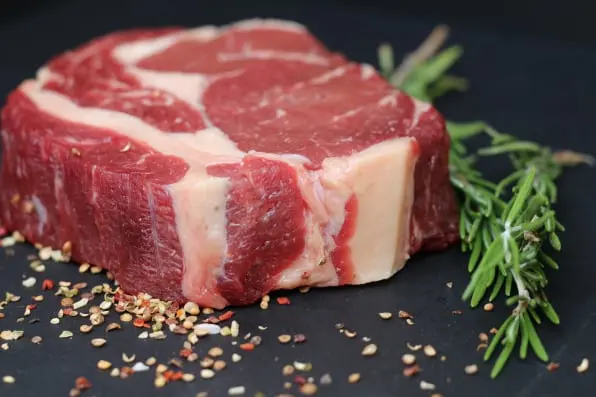Meat traceability app
Meat traceability app for meat packers, processors, slaughterhouse, and meat manufacturing. Manage entire meat processing from live animals to exporting with labels, documentation, quality control, meat identification app.
The Farmsoft Meat Traceability App comes with full project implementation management, training, and support solutions to deliver a fully tailored meat processing & meat packing solution that matches your exact meat traceability requirements and delivers maximum efficiency, reduces waste, and provides automatic traceability.

Meat Traceability during production & shipping
View Traceability App Specifications.
Many animal producers support establishment of a nationwide identification (ID) system capable of quickly tracking animals from birth to slaughter. While they believe such a system is needed to better deal with animal diseases or meet foreign market specifications, some consumer groups and others believe it also would be useful for food safety or retail informational purposes—and that the program should be able to trace meat products through processing and consumption.
However, despite years of effort on at least an animal ID program for disease purposes, many contentious issues remain unresolved. For example, should it be mandatory or voluntary? What types of information should be collected, on what animal species, and who should hold it, government or private entities? How much will it cost, and who should pay?
Following the first U.S. report of a cow with BSE (bovine spongiform encephalopathy or "mad cow disease") in late December 2003, the Secretary of Agriculture promised to take the lead in implementing an animal ID program capable of identifying all animals of interest within 48 hours of a disease discovery (BSE or other). The U.S. Department of Agriculture (USDA) has committed, through FY2006, $85 million to this effort, and all states now have systems for registering animal premises.
Some industry groups and lawmakers have criticized USDA for moving too slowly and/or not providing a clearer path toward a universal ID program. Others believe that USDA's progress to date simply reflects the deep divisions among producers and other interests over the many unresolved questions. A few livestock producers oppose any effort to establish broader programs, fearing they will be costly and intrusive.

Meat traceability packhouse hygiene checklist
The 109th Congress was asked to address these issues. A provision in the House-passed USDA appropriation for FY2007 (H.R. 5384) would have conditioned another $33 million in spending for animal ID on publication in the Federal Register of a "complete and detailed plan" for the program, "including, but not limited to, proposed legislative changes, cost estimates, and means of program evaluation." However, a House floor amendment to prohibit all ID program funding was defeated by a wide margin. A final FY2007 appropriation had not been passed by mid-January 2007, and USDA programs were operating under a continuing resolution.
Other bills included H.R. 1254, the National Farm Animal Identification and Records Act, H.R. 1256, to limit animal ID information disclosure, and H.R. 3170, creating a private Livestock Identification Board to oversee the program. The continuing differences over animal ID make it more likely that the topic will be part of the 2007 debate over a new omnibus farm bill. This CRS report will be updated if events warrant.
Animal Identification and Meat Traceability
Overview
U.S. animal agriculture wants to improve its ability to trace the movement of livestock from their birthplace to slaughter. Some advocates also want such traceability to reach all the way to the final consumer. Is a national system needed? Should it be mandatory? What would it cost, and who pays?
The livestock and meat industries have discussed these questions for some time, and an industry-government working group was developing a national animal identification (ID) plan for livestock disease tracking purposes. The group stated that the health of U.S. herds was "the most urgent issue" and "the most significant focus" of its proposed plan.1

Meat Traceability
The livestock and meat industries have discussed these questions for some time, and an industry-government working group was developing a national animal identification (ID) plan for livestock disease tracking purposes. The group stated that the health of U.S. herds was "the most urgent issue" and "the most significant focus" of its proposed plan.1
National interest intensified in the wake of such developments as the discovery in 2003 of bovine spongiform encephalopathy (BSE or "mad cow disease") in North America, and ongoing concerns about bioterrorism. Debate over a law requiring retail country-of-origin labeling (COOL) for meats and other products also has fueled interest in increased animal ID capabilities (but was not a focus of the industry-government working group). In 2007, the need for, and design of, an animal ID program will be a topic during debate on a new omnibus farm bill.
This report covers animal ID and, to a lesser extent, meat traceability. However, traceability, and the somewhat different but related concepts of "identity preservation" and "product segregation," also pertain to other agricultural products (e.g., grains) and issues (e.g., genetically modified, or GM, crops; the labeling of GM foods; and the production and labeling of organic foods). Several sources cited below, including the U.S. Department of Agriculture's (USDA's) Economic Research Service (ERS) and Choices articles (see footnote 1) and a 2002 Sparks study (see footnote 5), cover traceability in more breadth.

Meat Supplier Traceability
What Are Animal Identification and Meat Traceability?
Animal ID refers to the marking of individual farm animals, or a group or lot of animals, so that they can be tracked from place of birth to slaughter. Many producers already know, and keep records on, the identities of each animal. In addition, many animals have been identified as part of official disease eradication or control programs. However, no nationwide U.S. marking system, backed by universal numbering and a central data registry, is in place yet.
Animal ID is one component of meat traceability. Traceability is the more comprehensive concept of tracking the movement of identifiable products through the marketing chain. An extensive form of meat traceability is the ability to follow products forward from their source animal (i.e., birth or ancestry), through growth and feeding, slaughter, processing, and distribution, to the point of sale or consumption (or backward from the consumer to the source animal). Traceability can be used to convey information about a product, such as what it contains, how it was produced, and every place it has been.